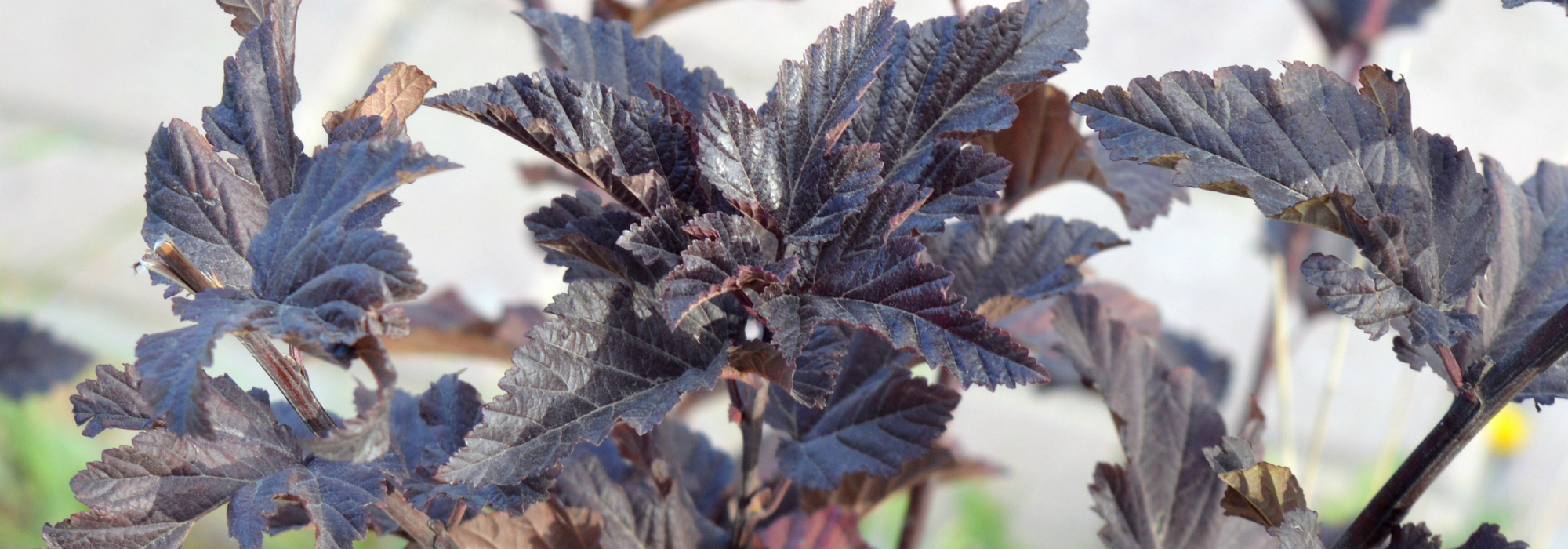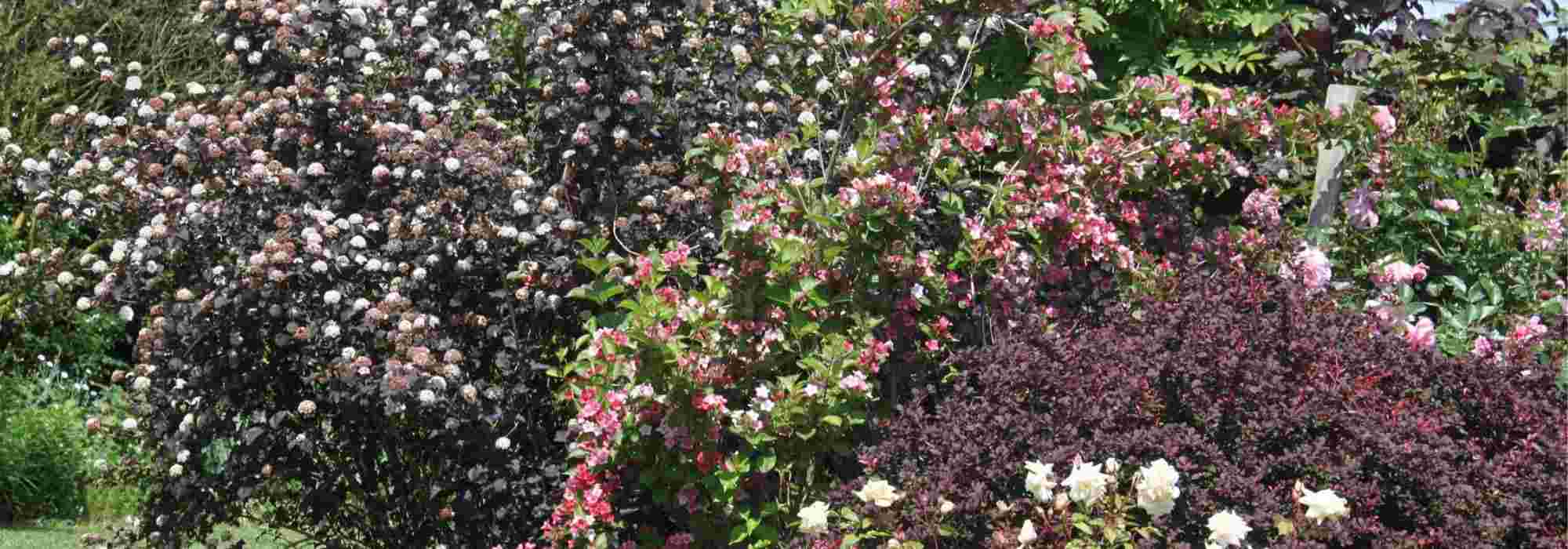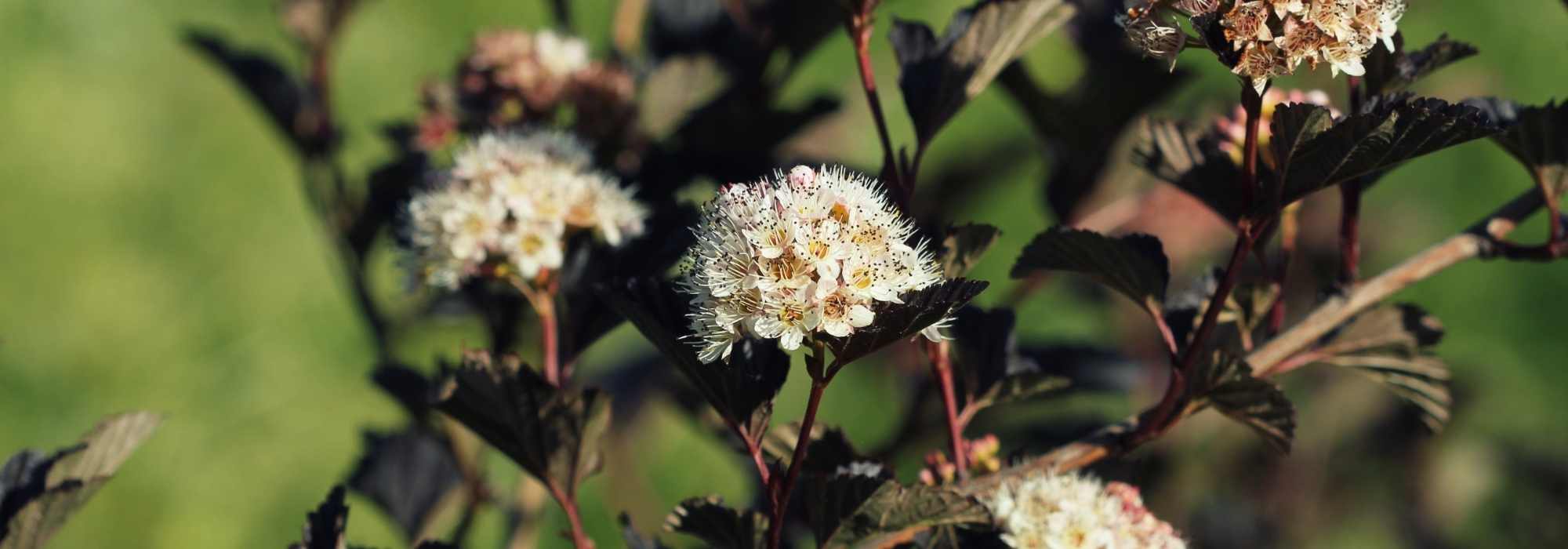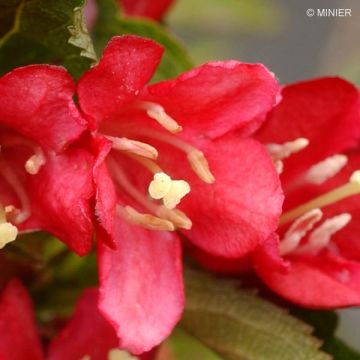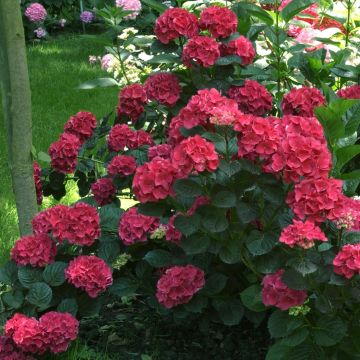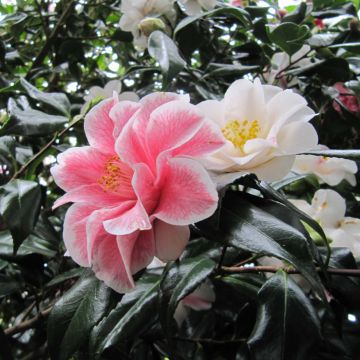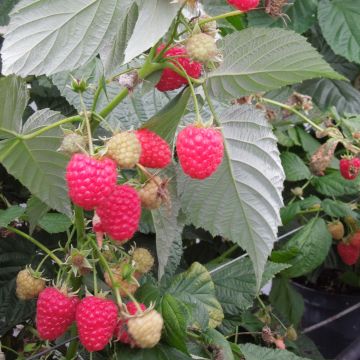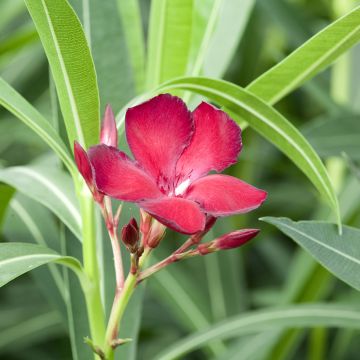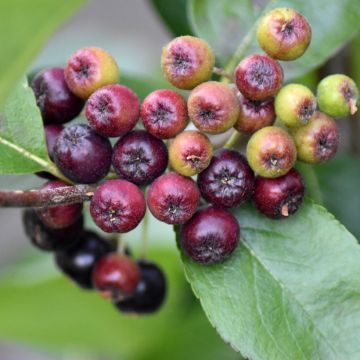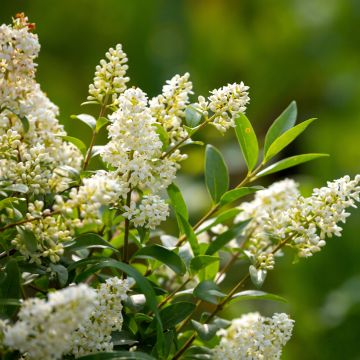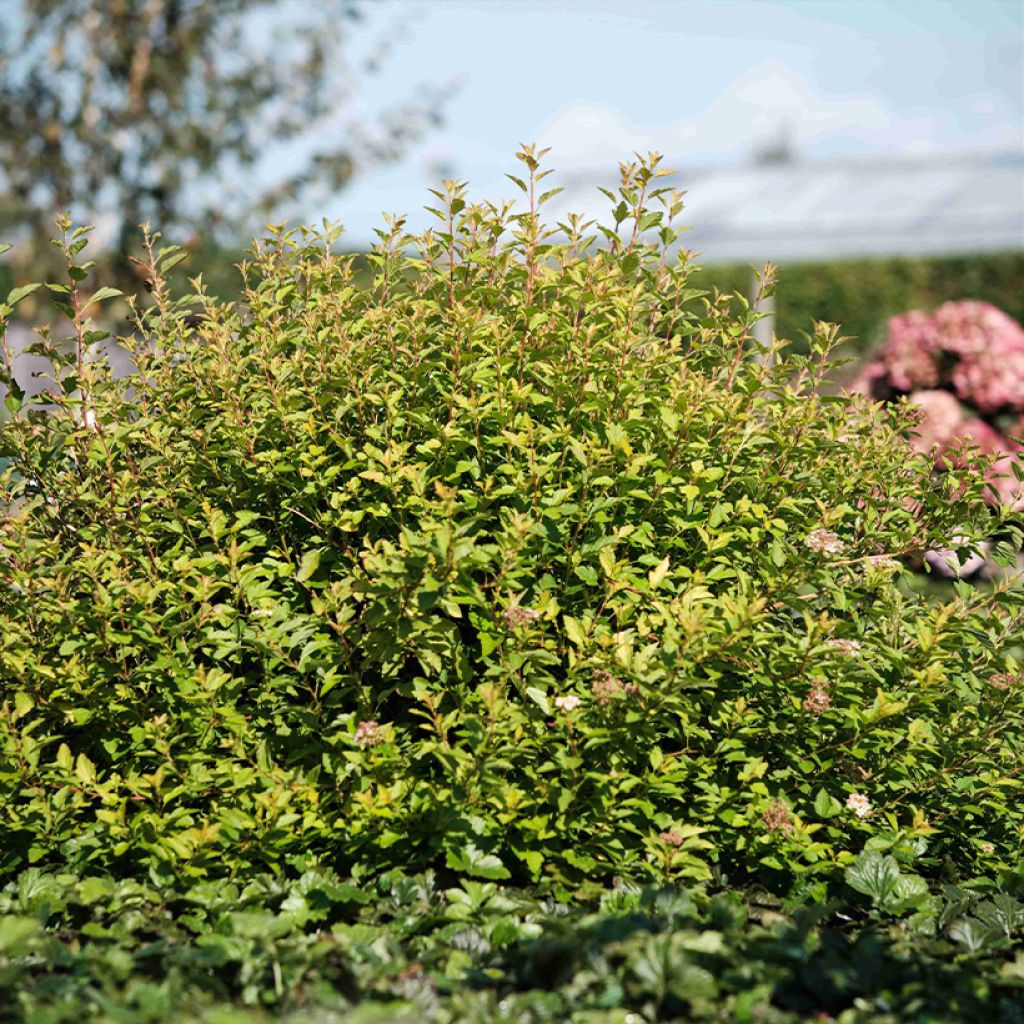

Physocarpus opulifolius Raspberry Lemonade - Ninebark
Physocarpus opulifolius Raspberry Lemonade - Ninebark
Physocarpus opulifolius Raspberry Lemonade® 'ZLEYel2'
Ninebark
Special offer!
Receive a €20 voucher for any order over €90 (excluding delivery costs, credit notes, and plastic-free options)!
1- Add your favorite plants to your cart.
2- Once you have reached €90, confirm your order (you can even choose the delivery date!).
3- As soon as your order is shipped, you will receive an email containing your voucher code, valid for 3 months (90 days).
Your voucher is unique and can only be used once, for any order with a minimum value of €20, excluding delivery costs.
Can be combined with other current offers, non-divisible and non-refundable.
Home or relay delivery (depending on size and destination)
Schedule delivery date,
and select date in basket
This plant carries a 24 months recovery warranty
More information
We guarantee the quality of our plants for a full growing cycle, and will replace at our expense any plant that fails to recover under normal climatic and planting conditions.
Would this plant suit my garden?
Set up your Plantfit profile →
Description
The Physocarpus opulifolius 'Raspberry Lemonade' is a recent variety of Ninebark bush attractive for its foliage, flowering, and decorative fruiting. This deciduous bush has a well-branched, dense, and compact growth habit. Its small, lobed leaves have a beautiful colour that ranges from chartreuse green to golden depending on the exposure. Small clusters of white flowers appear in spring, developing into decorative red fruits. Resistant to diseases, easy to grow, and requiring little maintenance, it is perfect for brightening up a partially shaded border or forming a low composite hedge.
Physocarpus belongs to the extensive Rose family and includes ten species in East Asia and North America. P. opulifolius is native to the eastern United States, up to Quebec and Manitoba. This bush has a moderate to fast growth rate, and in its native habitat, it can reach a height of 3m (10ft). Numerous horticultural varieties, generally smaller and often with colourful foliage, have been produced.
'Raspberry Lemonade' is a creation by David Zslesak, who initiated a hybridisation program in St. Paul, Minnesota (United States). In June 2011, he conducted pollination experiments between varieties, resulting in seedlings, including the 'ZLEYel2' variety. Derived from a cross between the 'Donna May' variety, with a compact habit and purple foliage, and 'Dart's Gold', a popular variety with golden yellow foliage, this new variety was tested for several years to ensure its stability. It was then introduced to the market under 'Raspberry Lemonade'.
This compact bush will not exceed 1.20m (4ft) in height with an equivalent width. It has short internodes and dense branching, which holds well without the risk of "umbrella-like" opening. This Physocarpus has a bushy appearance, with numerous leaves forming lush foliage. The leaves are trilobed, moderately lobed, crenate, and measure from 3 to 6 cm (1 to 2in). They have a yellow-green to golden colour, with the leaves closer to the centre of the bush being slightly greener. In May-June, the bush is covered with corymbs approximately 5 cm (2in) in diameter, composed of pale pink flower buds, which open into tiny white flowers with single petals. Despite their small size, these flower clusters are highly decorative and cover a significant portion of the foliage. After fertilisation, the faded flowers produce small coral-red fruits, highlighted by the bright foliage and add appeal to the plant.
Easy to grow, virtually immune to diseases (particularly resistant to powdery mildew, the fungus that powders the leaves white), requiring minimal maintenance, apart from occasional watering during hot periods, this 'Raspberry Lemonade' Ninebark bush is an excellent choice for small gardens. It thrives in urban environments and is particularly useful for brightening partially shaded areas. Create a contrast by planting a purple bush like the Cotinus coggygria Winecraft Black next to it, a Smokebush with beautiful dark foliage that turns reddish-orange in autumn. The dark green foliage will also complement your Physocarpus, such as the Prunus laurocerasus 'Zabeliana'. This low-growing Cherry Laurel has long, pointed leaves pleasantly contrasted by a generous white spring flowering. Along the edge of your border, plant ornamental perennials with decorative foliage at the base of your bushes, such as the Heuchera Beaujolais, with its pinkish-purple leaves.
Physocarpus opulifolius Raspberry Lemonade - Ninebark in pictures
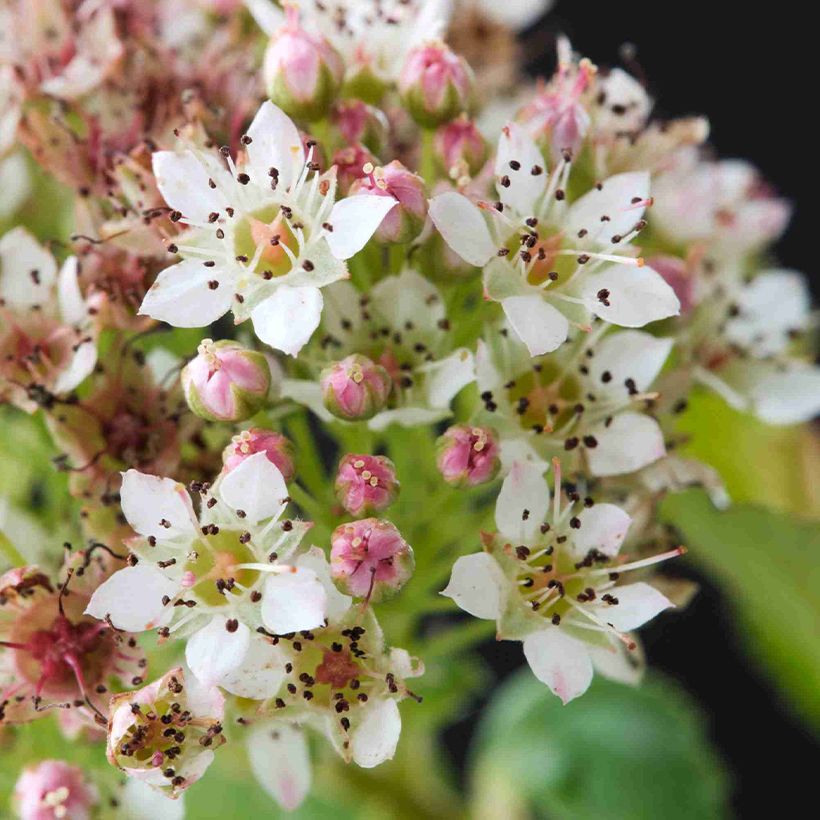

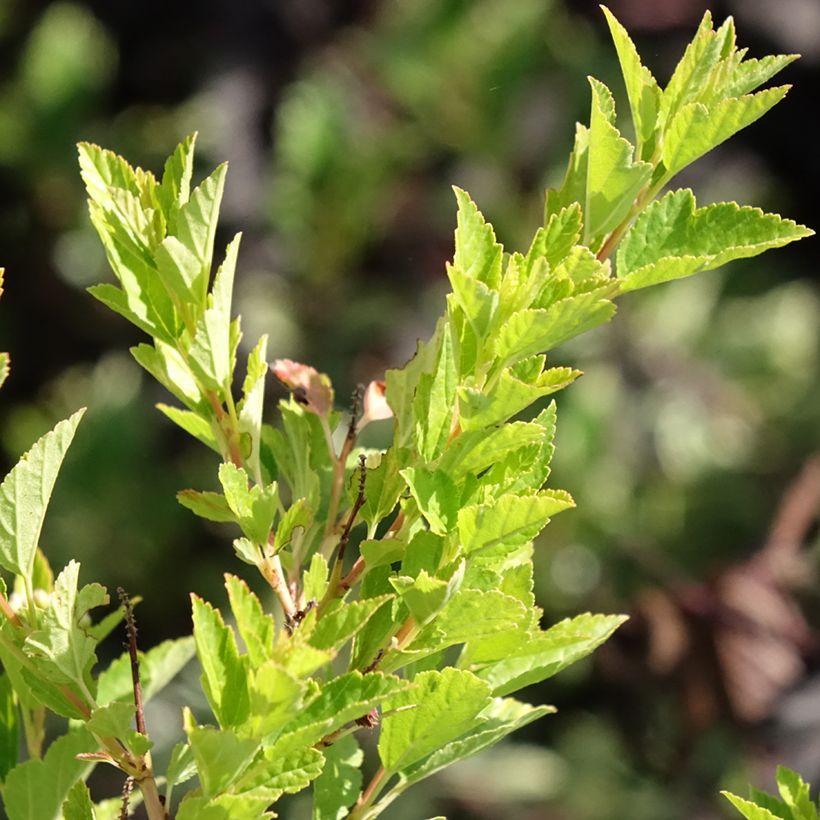

Plant habit
Flowering
Foliage
Botanical data
Physocarpus
opulifolius
Raspberry Lemonade® 'ZLEYel2'
Rosaceae
Ninebark
Cultivar or hybrid
Planting and care
The Physocarpus opulifolius 'Raspberry Lemonade' prefers deep, humus-bearing, rich and moist, neutral to acidic soils, but it adapts to the majority of terrains, except those that are too dry or excessively calcareous. Similarly, it will thrive better in partial shade, especially in warm climates, but can also grow in the sun in less bright regions. Dig a hole with sides and a depth of 50 cm (20in) and mix planting compost with the existing soil to improve water retention. Meanwhile, soak the root ball in a bucket of water to fully saturate it. Place it in the planting hole, backfill around it and water generously. Make regular waterings during the first two years to promote root growth and then during hot periods if necessary.
Planting period
Intended location
Care
Planting & care advice
This item has not been reviewed yet - be the first to leave a review about it.
Similar products
Haven't found what you were looking for?
Hardiness is the lowest winter temperature a plant can endure without suffering serious damage or even dying. However, hardiness is affected by location (a sheltered area, such as a patio), protection (winter cover) and soil type (hardiness is improved by well-drained soil).

Photo Sharing Terms & Conditions
In order to encourage gardeners to interact and share their experiences, Promesse de fleurs offers various media enabling content to be uploaded onto its Site - in particular via the ‘Photo sharing’ module.
The User agrees to refrain from:
- Posting any content that is illegal, prejudicial, insulting, racist, inciteful to hatred, revisionist, contrary to public decency, that infringes on privacy or on the privacy rights of third parties, in particular the publicity rights of persons and goods, intellectual property rights, or the right to privacy.
- Submitting content on behalf of a third party;
- Impersonate the identity of a third party and/or publish any personal information about a third party;
In general, the User undertakes to refrain from any unethical behaviour.
All Content (in particular text, comments, files, images, photos, videos, creative works, etc.), which may be subject to property or intellectual property rights, image or other private rights, shall remain the property of the User, subject to the limited rights granted by the terms of the licence granted by Promesse de fleurs as stated below. Users are at liberty to publish or not to publish such Content on the Site, notably via the ‘Photo Sharing’ facility, and accept that this Content shall be made public and freely accessible, notably on the Internet.
Users further acknowledge, undertake to have ,and guarantee that they hold all necessary rights and permissions to publish such material on the Site, in particular with regard to the legislation in force pertaining to any privacy, property, intellectual property, image, or contractual rights, or rights of any other nature. By publishing such Content on the Site, Users acknowledge accepting full liability as publishers of the Content within the meaning of the law, and grant Promesse de fleurs, free of charge, an inclusive, worldwide licence for the said Content for the entire duration of its publication, including all reproduction, representation, up/downloading, displaying, performing, transmission, and storage rights.
Users also grant permission for their name to be linked to the Content and accept that this link may not always be made available.
By engaging in posting material, Users consent to their Content becoming automatically accessible on the Internet, in particular on other sites and/or blogs and/or web pages of the Promesse de fleurs site, including in particular social pages and the Promesse de fleurs catalogue.
Users may secure the removal of entrusted content free of charge by issuing a simple request via our contact form.
The flowering period indicated on our website applies to countries and regions located in USDA zone 8 (France, the United Kingdom, Ireland, the Netherlands, etc.)
It will vary according to where you live:
- In zones 9 to 10 (Italy, Spain, Greece, etc.), flowering will occur about 2 to 4 weeks earlier.
- In zones 6 to 7 (Germany, Poland, Slovenia, and lower mountainous regions), flowering will be delayed by 2 to 3 weeks.
- In zone 5 (Central Europe, Scandinavia), blooming will be delayed by 3 to 5 weeks.
In temperate climates, pruning of spring-flowering shrubs (forsythia, spireas, etc.) should be done just after flowering.
Pruning of summer-flowering shrubs (Indian Lilac, Perovskia, etc.) can be done in winter or spring.
In cold regions as well as with frost-sensitive plants, avoid pruning too early when severe frosts may still occur.
The planting period indicated on our website applies to countries and regions located in USDA zone 8 (France, United Kingdom, Ireland, Netherlands).
It will vary according to where you live:
- In Mediterranean zones (Marseille, Madrid, Milan, etc.), autumn and winter are the best planting periods.
- In continental zones (Strasbourg, Munich, Vienna, etc.), delay planting by 2 to 3 weeks in spring and bring it forward by 2 to 4 weeks in autumn.
- In mountainous regions (the Alps, Pyrenees, Carpathians, etc.), it is best to plant in late spring (May-June) or late summer (August-September).
The harvesting period indicated on our website applies to countries and regions in USDA zone 8 (France, England, Ireland, the Netherlands).
In colder areas (Scandinavia, Poland, Austria...) fruit and vegetable harvests are likely to be delayed by 3-4 weeks.
In warmer areas (Italy, Spain, Greece, etc.), harvesting will probably take place earlier, depending on weather conditions.
The sowing periods indicated on our website apply to countries and regions within USDA Zone 8 (France, UK, Ireland, Netherlands).
In colder areas (Scandinavia, Poland, Austria...), delay any outdoor sowing by 3-4 weeks, or sow under glass.
In warmer climes (Italy, Spain, Greece, etc.), bring outdoor sowing forward by a few weeks.






























